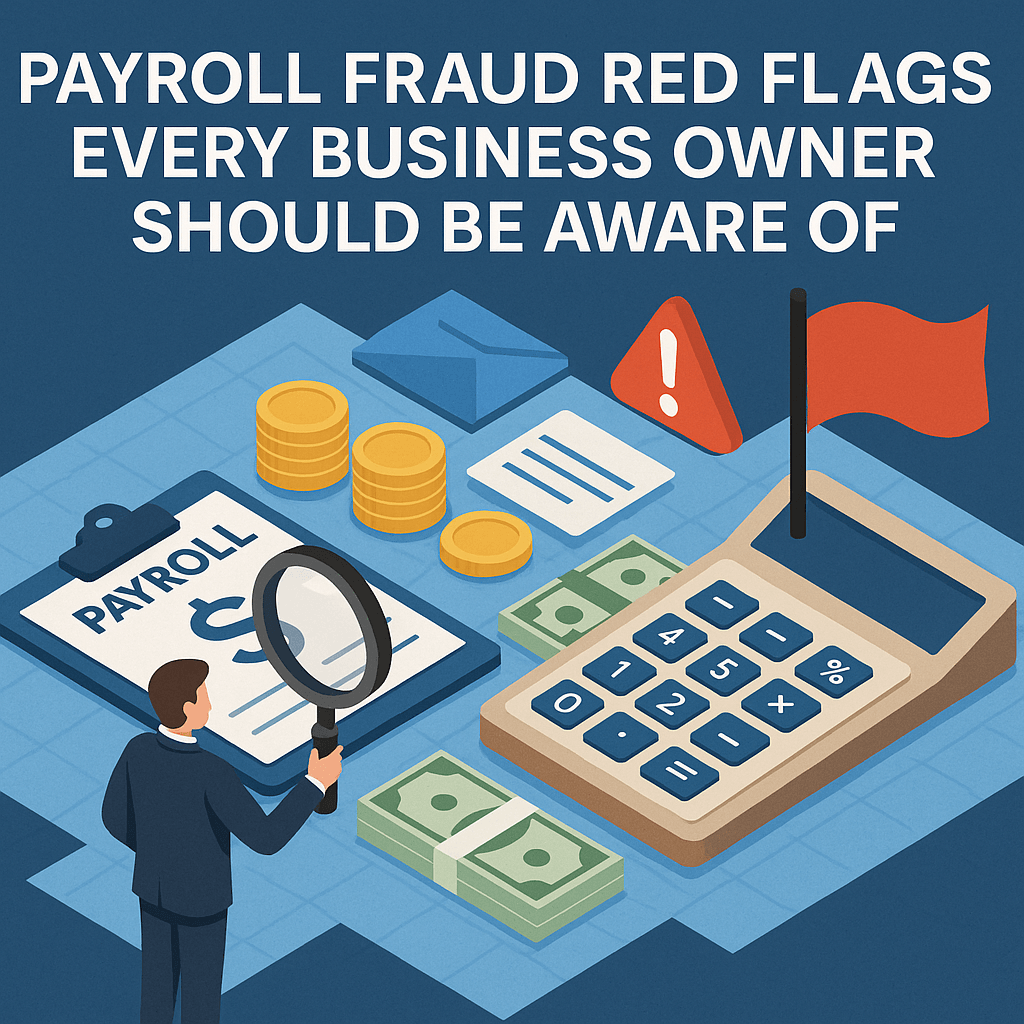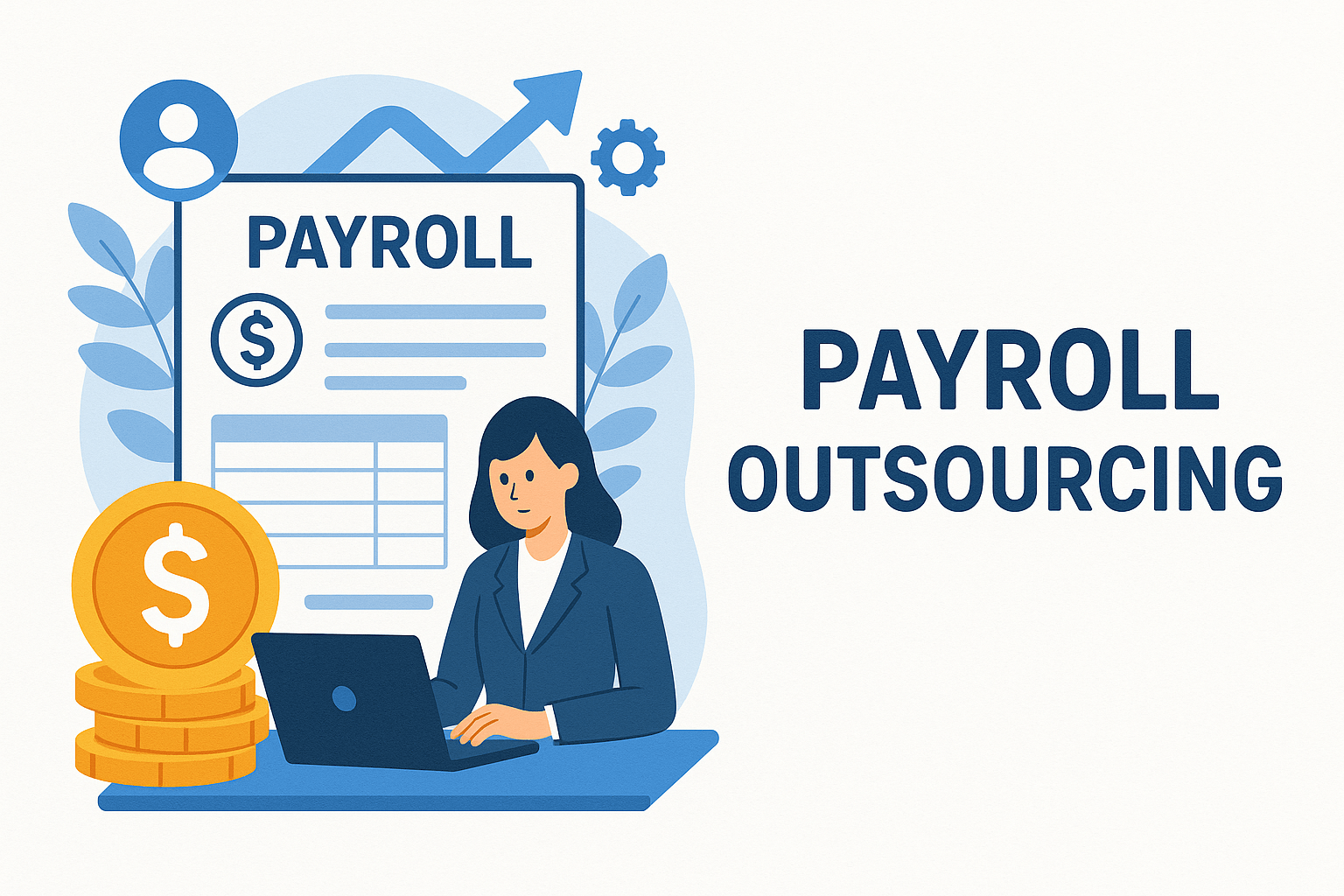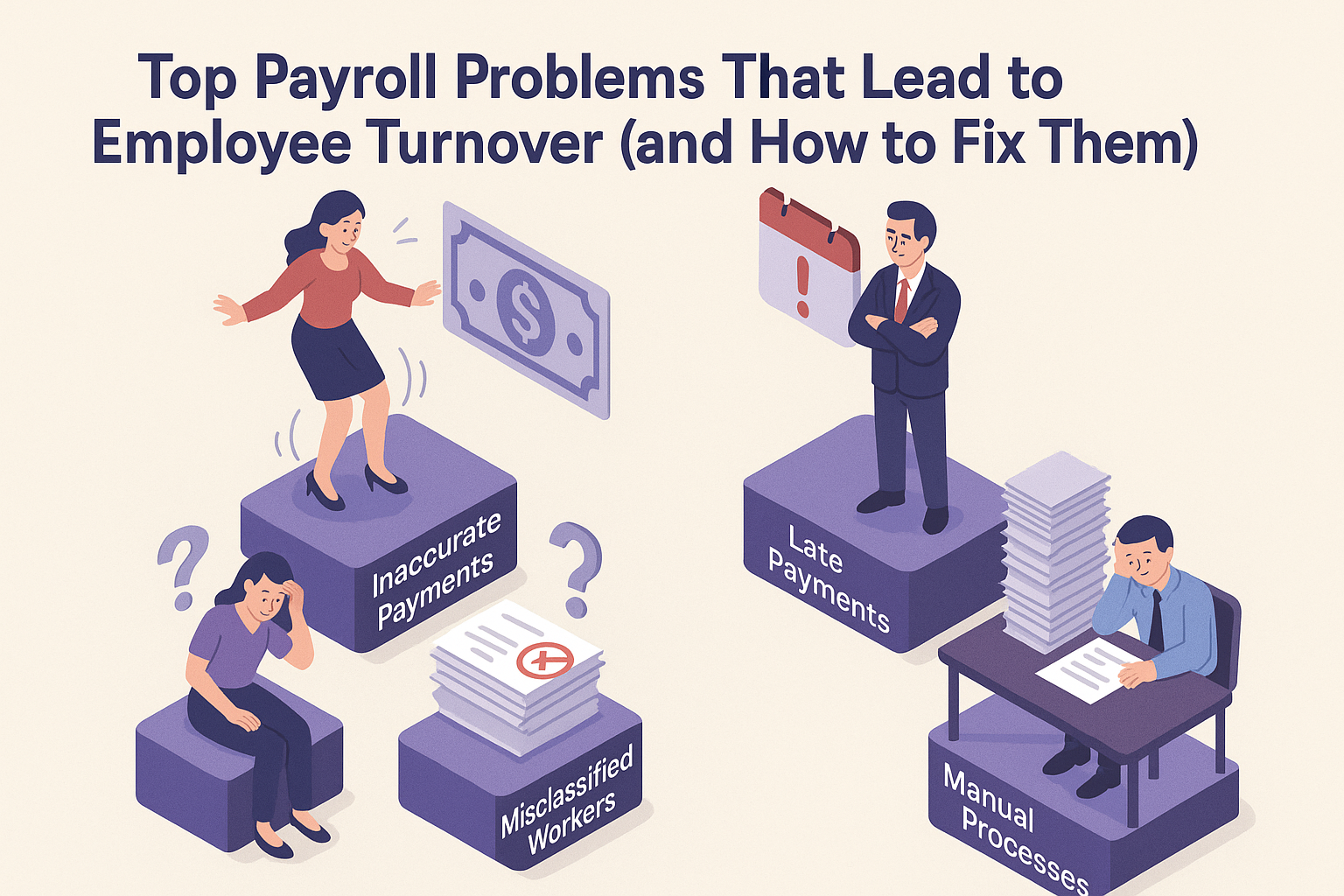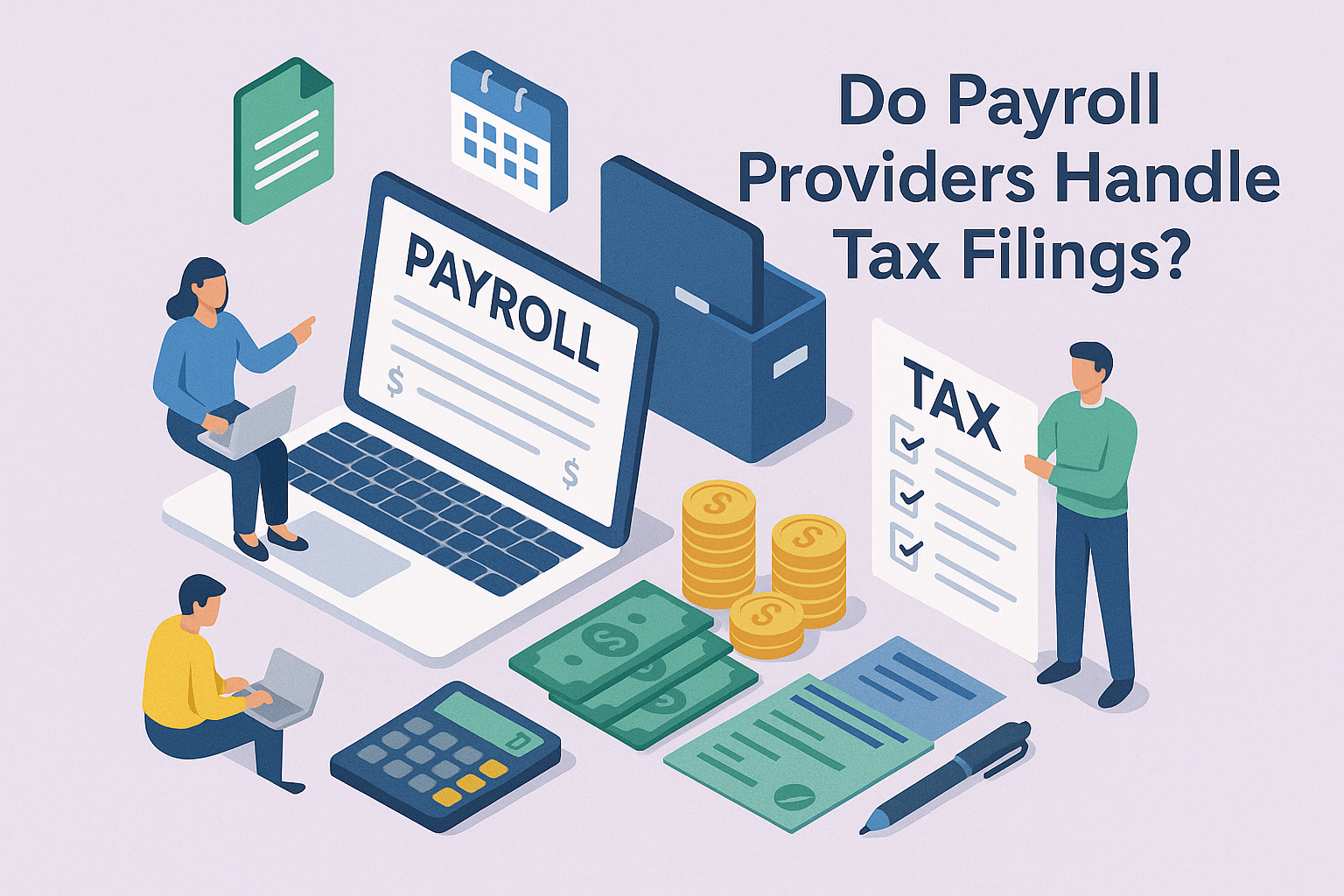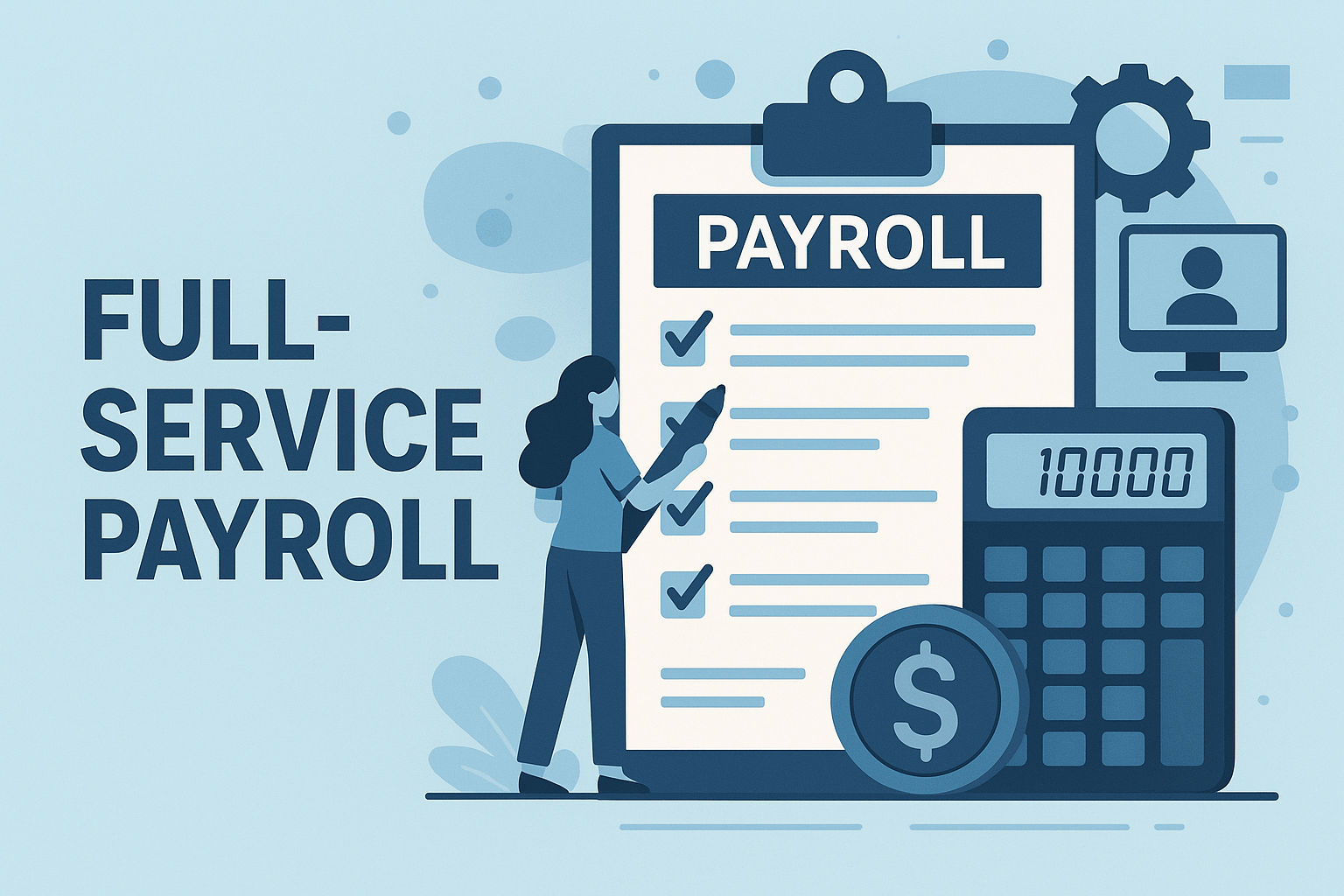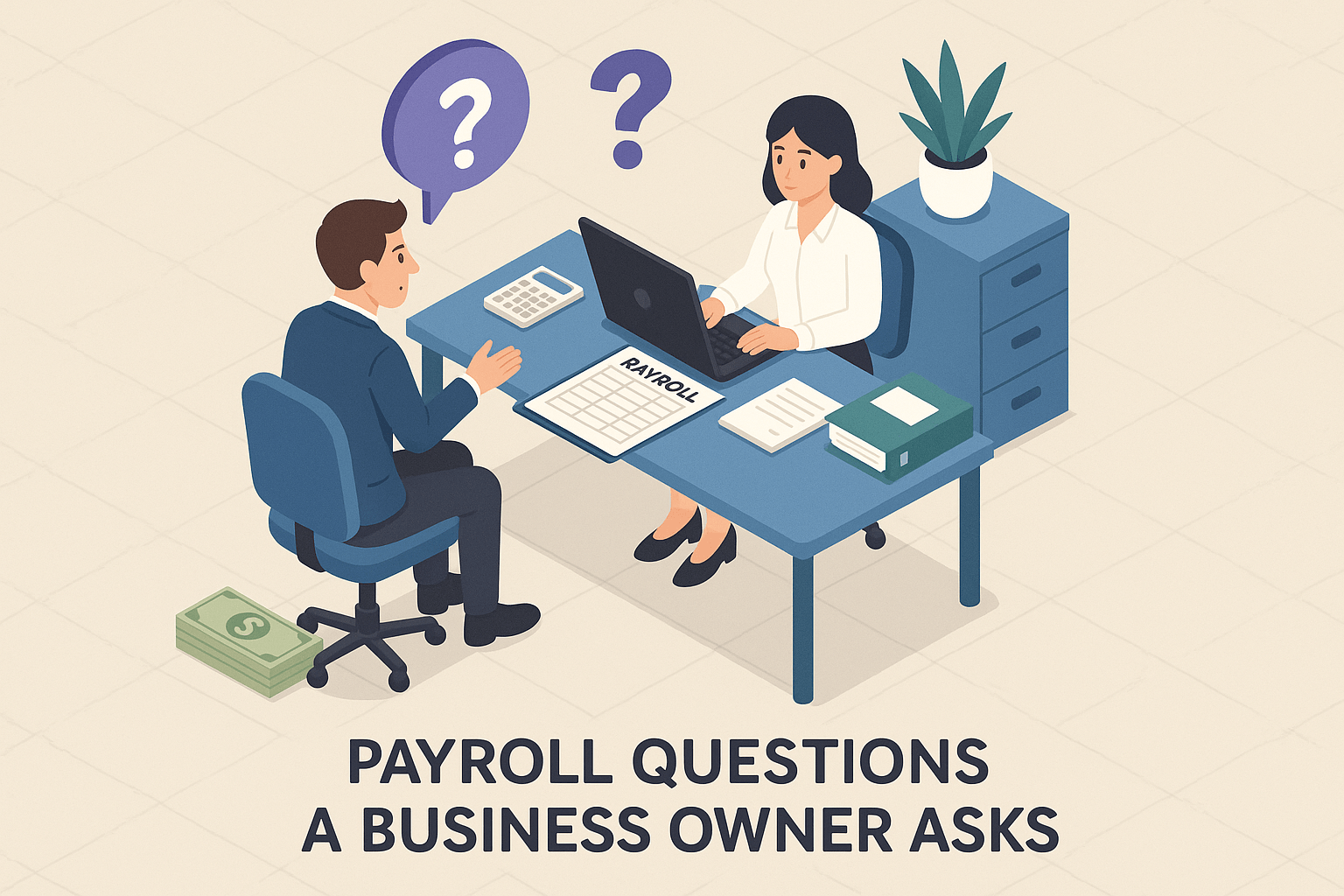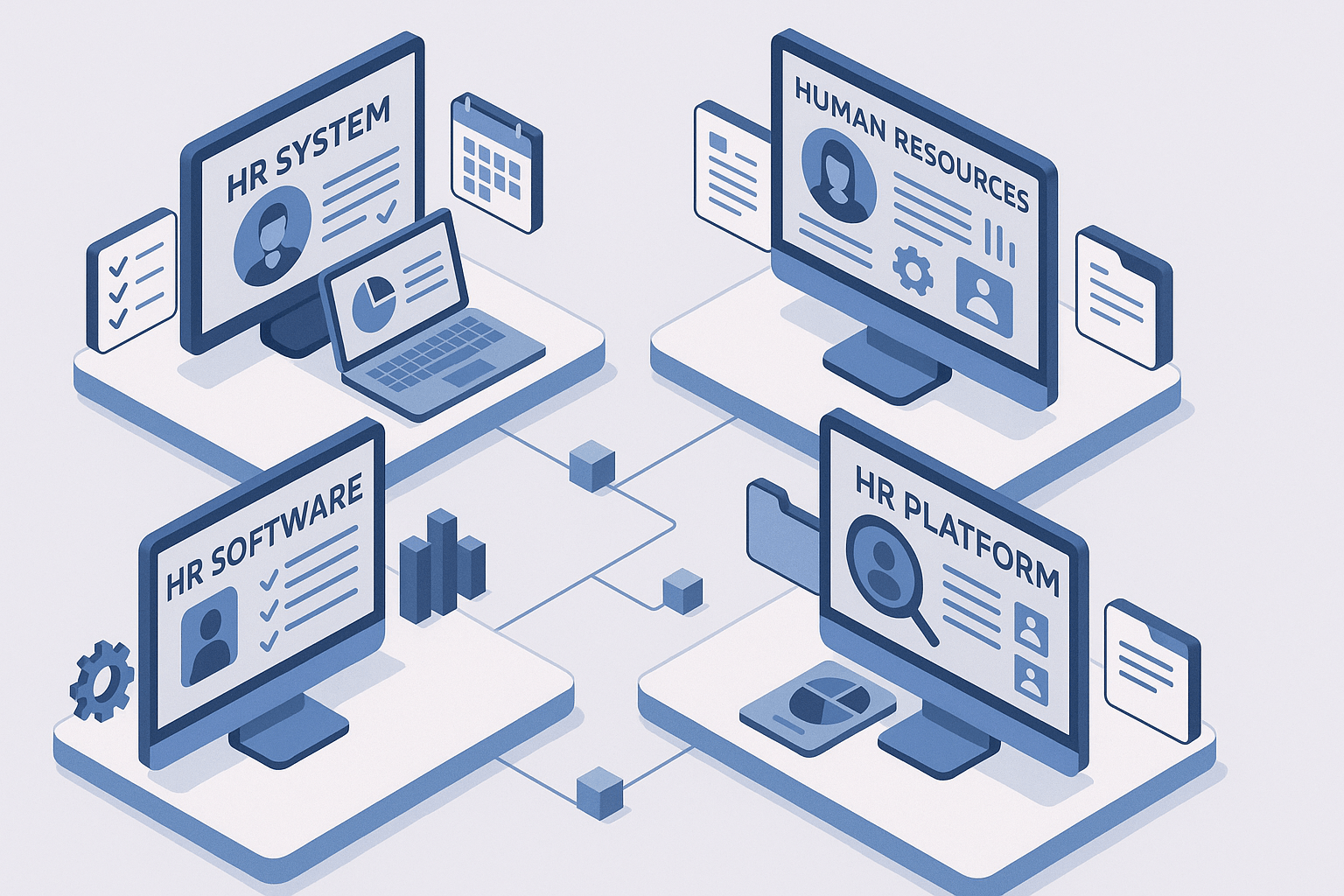10 Common Payroll Mistakes/Errors (And How To Avoid Them)
September 25th, 2024
7 min read
.png?width=1344&height=768&name=payroll(1).png)
Are you constantly worried about payroll mistakes that could cost your business thousands of dollars in penalties or harm your reputation? Late payments, inaccurate tax filings, and employee misclassification issues don’t just lead to stress—they cost real money and credibility. Payroll processing is a vital task that demands precision, but let’s face it, even seasoned professionals struggle to get it right.
At Lift HCM, we’ve worked with countless businesses to navigate payroll challenges, and we’ve seen the damage errors can cause firsthand. Miscalculations, missed deadlines, and compliance missteps can spiral into significant financial and legal troubles. But there’s good news: every mistake has a solution.
In this guide, we’ll explore the top 10 payroll mistakes, their impact, and actionable strategies to fix them. By the end, you’ll know how to streamline your payroll process, reduce errors, and avoid costly consequences.
Table of Contents
- Understanding the Impact of Payroll Errors
- 1. Misclassification of Employees
- 2. Incorrect Calculation of Overtime Pay
- 3. Inaccurate Tax Withholdings
- 4. Missed Payroll Deadlines
- 5. Improper Handling of Garnishments and Deductions
- 6. Neglecting to Maintain Accurate Records
- 7. Failing to Account for Paid Time Off (PTO)
- 8. Miscalculating Final Paychecks
- 9. Ignoring State and Local Payroll Tax Requirements
- 10. Failing to Handle Payroll for Remote Workers Properly
- Is Your Payroll Process In Need of Optimization?
Understanding the Impact of Payroll Errors
Before diving into specific mistakes, it's crucial to understand the potential consequences of payroll errors:
- Employee dissatisfaction: Mistakes can erode trust and morale.
- Legal and financial penalties: Non-compliance with tax laws can result in hefty fines.
- Damage to company reputation: Payroll mishaps can quickly become public, affecting your brand.
- Resource drain: Time and effort spent correcting errors can impact productivity.
- Inaccurate financial reporting: Payroll errors can lead to flawed budgeting and financial planning.
A study by the American Payroll Association shows that 40% of small businesses incur IRS penalties for payroll errors annually, averaging $845. Payroll mistakes can cause financial stress for employees, erode trust, and lead to turnover. For businesses, correcting these errors drains resources and affects productivity.
Additionally, payroll issues can harm a company's reputation and hinder talent attraction. Understanding these impacts highlights the importance of accurate payroll processing and error prevention.
The 10 Most Common Payroll Erros
Now, let's explore the ten most common payroll mistakes and learn how to prevent them.
1. Misclassification of Employees
One of the most frequent and costly payroll errors is misclassifying employees. Correctly classifying employees as either exempt or non-exempt under the Fair Labor Standards Act (FLSA) is crucial to compliance, and misclassification can lead to legal issues and penalties.
Why it happens: Companies may misclassify workers to save on taxes and benefits or simply because they lack an understanding of the legal definitions.
How to avoid it:
- Thoroughly review IRS guidelines on worker classification
- Conduct regular audits of your workforce
- Consult with legal experts when in doubt about a worker's status
- Use the IRS Form SS-8 to determine a worker's status if you're unsure
📌 Pro tip: Different states may have their own criteria for worker classification, which can sometimes be stricter than federal guidelines. Regular training on this topic for HR and management teams can ensure consistent and accurate classification across the organization.
2. Incorrect Calculation of Overtime Pay
Overtime calculations can be particularly tricky when dealing with different pay rates, shift differentials, or non-discretionary bonuses.
Why it happens: Misunderstanding of labor laws, manual calculation errors, or outdated payroll systems.
How to avoid it:
- Familiarize yourself with the Fair Labor Standards Act (FLSA) overtime rules
- Implement an automated time-tracking system
- Regularly review and update overtime policies
- Train managers on proper timekeeping and overtime approval processes
3. Inaccurate Tax Withholdings
Withholding the wrong amount of taxes can cause headaches for both employers and employees during tax season. Tax withholding errors can be particularly problematic because they often go unnoticed until tax filing time, at which point correcting them becomes more complicated. The introduction of the revised W-4 form in 2024 added another layer of complexity, as it significantly changed how employees communicate their withholding preferences.
Employers should provide clear guidance to employees on filling out these forms and consider offering workshops or one-on-one sessions during onboarding and open enrollment periods. Additionally, it's crucial to account for special tax situations such as supplemental wages, fringe benefits, and deferred compensation, which can affect withholding calculations.
Why it happens: Outdated W-4 forms, miscalculated taxable wages, or errors in payroll software settings.
How to avoid it:
- Encourage employees to review and update their W-4 forms regularly
- Stay informed about changes in tax laws and update your payroll system accordingly
- Conduct periodic audits of tax withholdings
- Use reliable payroll software that automatically updates tax tables
📌 Pro Tip: Encourage employees to use the IRS Withholding Estimator to ensure accurate tax withholding. Remind them to update it after major life changes, like marriage or a new job, to avoid surprises during tax season. Offering this tool during onboarding or reviews can help keep their withholdings on track.
4. Missed Payroll Deadlines
Late payroll can harm morale, violate labor laws, and lead to legal issues. Many states impose penalties for late payments. In Illinois, employers face civil and criminal penalties for not paying on time. Consistent delays may trigger tax audits. Employers should have a payroll continuity plan for emergencies like system outages or key personnel absences.
Why it happens: Poor planning, cash flow issues, or administrative oversights.
How to avoid it:
- Establish a clear payroll calendar and stick to it
- Set up reminders and alerts for important payroll dates
- Maintain adequate cash reserves to cover payroll
- Have a backup plan for processing payroll in case of emergencies
5. Improper Handling of Garnishments and Deductions
Mismanaging wage garnishments and deductions can lead to legal and financial issues. Different garnishments (e.g., child support, tax levies) have varying priorities and limits. Laws protect employees by capping garnishments based on disposable earnings. Employers must track garnishments and ensure timely payments to avoid liability.
💡 Did You Know? According to ADP, about 7% of employees have their wages garnished, with child support being the most common reason.
Why it happens: Lack of understanding of garnishment orders, miscommunication between departments, or manual processing errors.
How to avoid it:
- Establish a clear process for handling garnishment orders
- Train payroll staff on proper garnishment procedures
- Use payroll software that can automate garnishment calculations and payments
- Regularly review and update garnishment records
6. Neglecting to Maintain Accurate Records
Poor record-keeping can lead to compliance issues and payroll disputes. Accurate records include hours worked, pay rates, and wage adjustments, crucial for compliance and business decisions. Comprehensive records help resolve disputes quickly and meet retention requirements, like keeping payroll records for three years per FLSA and some benefits records for six years. In Illinois, Form I-9 must be kept for three years after hire or one year after employment ends. Organized records aid legal compliance, provide business insights, and streamline HR processes, saving time and money.
Why it happens: Lack of a systematic approach to record-keeping, reliance on paper-based systems, or inadequate backup procedures.
How to avoid it:
- Implement a robust digital record-keeping system
- Regularly back up all payroll data
- Establish retention policies that comply with federal and state laws
- Conduct periodic audits of payroll records
7. Failing to Account for Paid Time Off (PTO)
Inaccurate tracking and calculation of PTO can lead to overpayments or underpayments. PTO management becomes even more complex when dealing with different types of leave, such as vacation time, sick leave, and personal days. Some states and localities have specific requirements for paid sick leave accrual and usage, adding another layer of compliance considerations.
Companies must decide how to handle unused PTO—carryover, "use it or lose it," or payout. Each has payroll implications. Even with "unlimited" PTO, tracking is needed for fair use and compliance. Regularly updating employees on PTO balances helps prevent end-of-year rushes and aids workforce planning.
Why it happens: Manual tracking errors, unclear PTO policies, or lack of communication between HR and payroll departments.
How to avoid it:
- Implement an automated PTO tracking system
- Communicate PTO policies to all employees
- Regularly reconcile PTO balances
- Integrate PTO tracking with your payroll system
8. Miscalculating Final Paychecks
Errors in final paychecks can lead to legal disputes and damage your company's reputation. Final paychecks often involve more than just regular wages. They may need to include pro-rated bonuses, commissions, expense reimbursements, and payouts for unused vacation time. The timing of final paychecks is also critical, as many states have laws specifying how quickly a departing employee must be paid, often differentiating between voluntary resignations and terminations.
💡 Did You Know? According to the American Payroll Association, the error rate in payroll processing for U.S. companies is around 1-8%. This may not seem significant, but even a small error rate can result in large financial impacts when it involves issues like overpayments, tax filing errors, or failure to comply with local regulations.
In California, final wages are due immediately for involuntary terminations and within 72 hours for resignations. Employers should know legal deductions from final paychecks, like loan recoveries. A clear policy and staff training on final paycheck procedures are recommended for consistency and compliance.
Why it happens: Failing to account for accrued PTO, bonuses, or other owed compensation.
How to avoid it:
- Create a comprehensive checklist for processing final paychecks
- Review state laws regarding final paycheck requirements
- Double-check all calculations before issuing the final payment
- Have a second person verify the final paycheck amount
9. Ignoring State and Local Payroll Tax Requirements
Neglecting state and local taxes can lead to penalties. Employers face various taxes beyond federal ones, including unemployment and disability insurance, and local levies. This is especially challenging for companies with employees in multiple states or remote workers. Tax rates and rules can change, requiring constant updates. Employers should monitor legislative changes and plan for new tax obligations when expanding into new areas.
Why it happens: Lack of awareness of local tax laws, especially for companies operating in multiple jurisdictions.
How to avoid it:
- Stay informed about state and local tax laws in all areas where you have employees
- Use payroll software that automatically calculates and files state and local taxes
- Consider working with a local tax professional for complex multi-state operations
- Regularly review and update your tax compliance procedures
10. Failing to Handle Payroll for Remote Workers Properly
With remote work on the rise, companies face payroll challenges for employees in different states or countries. Some states have tax agreements for cross-border workers, but these aren't universal. International remote work adds complexity with tax and labor law compliance. Companies must track employee locations to manage tax obligations and adjust benefits. As remote work evolves, flexible and compliant policies are essential.
Why it happens: Lack of understanding of tax implications for remote workers, failure to register in new jurisdictions.
How to avoid it:
- Develop clear policies for remote work arrangements
- Stay informed about tax obligations in all locations where you have remote workers
- Consider using a Professional Employer Organization (PEO) for complex multi-state or international payroll situations
- Regularly review and update your remote work policies and payroll procedures’
📌 Pro tip: When employees work from locations different from their office or company headquarters, it can trigger new state tax withholding requirements, unemployment insurance obligations, and workers' compensation considerations. Companies need to carefully track where their employees are working and for how long.
Is Your Payroll Process In Need of Optimization?
In today's dynamic business environment, payroll has evolved from a mere administrative task to a strategic function. Accurate and timely payroll is essential for employee satisfaction, regulatory compliance, and overall business success. By optimizing your payroll process, you can unlock significant benefits including increased efficiency, cost reduction, and improved employee morale.
Now that you understand how to prevent payroll mistakes, the next step is learning about employee classification with our guide on exempt vs. nonexempt employees.
Lift HCM specializes in transforming complex payroll challenges into streamlined solutions. Our expertise can help you navigate the complexities of payroll, ensuring accuracy, compliance, and peace of mind. Are you ready to elevate your payroll process?
Please note that this article does not cover all possible scenarios, and any discussions or viewpoints should not be considered legal advice. Readers are advised to consult with legal professionals for specific legal guidance.
.jpg?width=216&height=144&name=composition-with-book-light-bulb(1).jpg) If you are not yet ready to speak with a team member, you may find these resources helpful:
If you are not yet ready to speak with a team member, you may find these resources helpful:
Caitlin Kapolas is a results-driven professional with a strong background in account management and retail. She is dedicated to improving client experiences and building lasting relationships. Caitlin excels in identifying client needs, resolving issues, and implementing customized solutions that drive value. Her effective communication skills ensure high client satisfaction and loyalty, making her a trusted advisor and partner in meeting client needs with precision and professionalism.
Topics:




.png?width=1536&height=1024&name=Create%20a%20background%20that%20reads%2c%20How%20Long%20to%20Keep%20P%20(1).png)



